#5th edition dungeon masters guide
Explore tagged Tumblr posts
Text
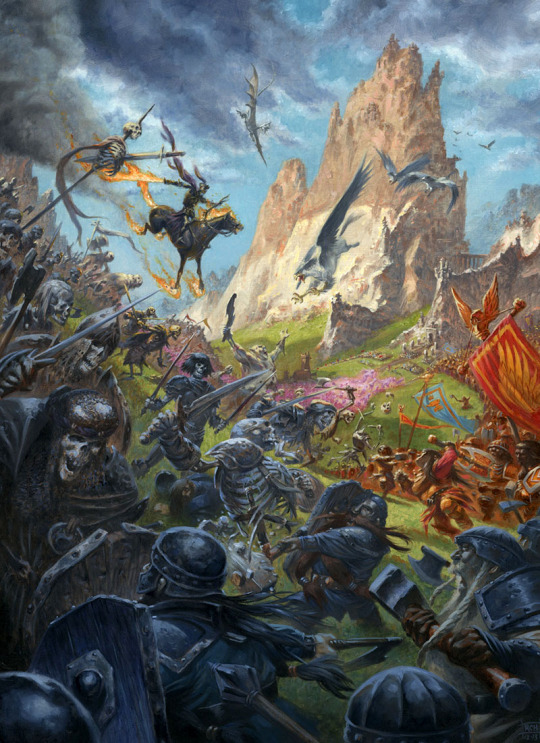
Dungeon Master's Guide (5th Edition) - Battle! by Ralph Horsley
#Dungeons and Dragons#Dungeons & Dragons#D&D#5th Edition#Dungeon Master's Guide#Battle!#Fantasy#Art#Ralph Horsley#wizards of the Coast
120 notes
·
View notes
Text

Dungeon Master's Guide
Dungeons & Dragons
5th Edition
2014
Cover illustration by Tyler Jacobson
0 notes
Text
The idea of a Pure Vanilla and Shadow Milk pirates AU has taken over my brain.
Audio from "A Crap Guide to D&D [5th Edition] - Dungeon Master" by JoCat on Youtube.
#art#my art#artists on tumblr#animation#cookie run kingdom#shadow milk cookie#pure vanilla cookie#black sapphire cookie#shadowvanilla#pureshadow#shadowvanilla pirates au#svpau
252 notes
·
View notes
Text
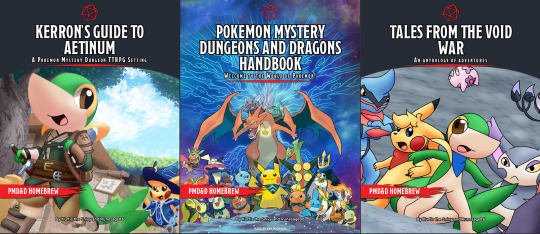
I've finished transcribing all of the adventures that Rune and I have run in the Aetinum setting. They can all be found here at the link below along with revised species rules in the PMD&D handbook, the setting guide for expanded lore and maps and handouts for the adventures in the Tales from the Void War book. This has been a massive project several years in the making, so I hope that some table out there can get some use out of it.
In Tales from the Void War, there are 6 adventures written for D&D 5th edition ranging from levels 3 to 18. While most of them are written for experienced dungeon masters and players, Humble Beginnings, Shadow Over Aquan and Palace of the Rainbow Lord are all well suited for starter adventures (though Palace of the Rainbow Lord is a 10th level adventure which may be an awkward place to start from.) I should also caution that not all of them have been thoroughly tested since I decided to lower the level of some of the adventures to provide variety, though Humble Beginnings and Shadow Over Aquan have been tested to ensure they're balanced for new players. If your table ends up running one of our adventures, please let me know in the comments. I'm fascinated to hear how these adventures go at other tables.
37 notes
·
View notes
Text
Bahamut and Tiamat were aspects of Io/Asgorath in early 2nd edition of AD&D lore?
...as well being the two key archetypes influencing all dragons, and in 1st edition of AD&D, the only gods of dragons?

2014/2015 "Rage of Dragons" miniatures of Tiamat and Bahamut
Wile changes to Bahamut and Tiamat (and deific dragon lore in general) in 5th edition (were Bahamut and Tiamat are the supreme, and only real draconic gods), and to a degree 4th edition (were Bahamut and Tiamat were 2 halves of Io), were controversial; these changes are actually based on far older lore, that was changed mid 2nd edition, with 1992's Monster Mythology and further on.
In 1st edition of Advanced Dungeons and Dragons, Bahamut and Tiamat were the only dragon gods, with worship by dragons being split between them, as seen in 1984 article "Dragons and their deities" in Dragon #86: "Evil dragons worship Tiamat, and good dragons worship Bahamut. That is, for all practical purposes, the extent of common knowledge about the way dragons worship their deities."
The divinity of of two was first outright affirmed in 1980 in "Leomund's Tiny Hut: Rearranging and Redefining the Mighty Dragon" in Dragon #38; with Tiamat kinda earlier in the original 1978's Monster Manual, were she was presented among the Lords of Nine.

Miniatures of Bahamut (or as named in the catalog the Platinum Dragon) and Tiamat (or as named in the catalog the Spectral Dragon), from Grenadier Models 1990 catalogue, originally from the 1989 Dragon of the Month II line from 1989. Special thanks @oldschoolfrp, thanks to who I know of this lines existence. Their original post here. I recommend checking them out.
Paladine and Takhisis from Dragonlance, also debuting in 1984, were often identified with Bahamut (Paladine) and Tiamat (Takhisis). It's rather ambiguous though - the creator of both, Jeff Grubb believing this, but writers of Dragonlance novels, and main architects of the setting, Margaret Weis and Tracy Hickman (who basically gave them personality and story), believing them as similar, but separate characters/deities.
Official publications either suggested a connection, or stated them to be the same (as well as Bahamut and Tiamat gaining traits of Paladine and Takhisis, like being siblings, and in past, lovers), with 5th edition (with 2021's Fizban's Treasury of Dragons), stating them to be the same.
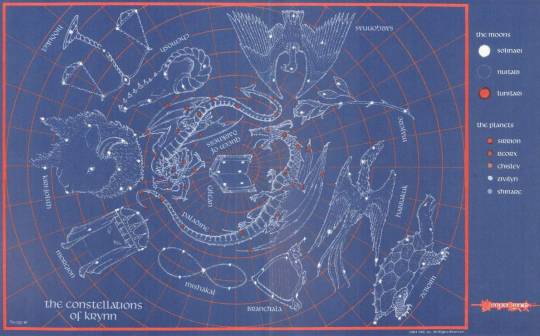
Constellations of Krynn, in the center Takhisis (left) and Paladine (right) opposing each other, the Gilean' constellation between them. From 1984's "DL5: Dragons of Mystery".
Still, Paladine on Krynn (the world Dragonlance is set in) is/was the leader of the Gods of Good, and Takhisis is/was the leader of the Gods of Evil, and were among the most powerful deities of the setting, equaled only by their brother Gilean and second only to the High God and Chaos.
According to 1989's "Player's Guide to Dragonlance, the two together created the first dragons: "Paladine is Father of Good and Master of Law. During the Age of Dreams, Paladine led the gods in creation. Paladine and Takhisis, Queen of Darkness, infused the raw fury of chaos with form and purpose, creating the first material beings— dragons. Takhisis, jealous the first creations were not entirely hers, corrupted the chromatic dragons to evil. Paladine replaced his fallen children with the good, metallic dragons, but Takhisis’s act began the rift between good and evil."
This origin of dragons on Krynn evolved overtime though, with some changes, but I won't elaborate on this here.
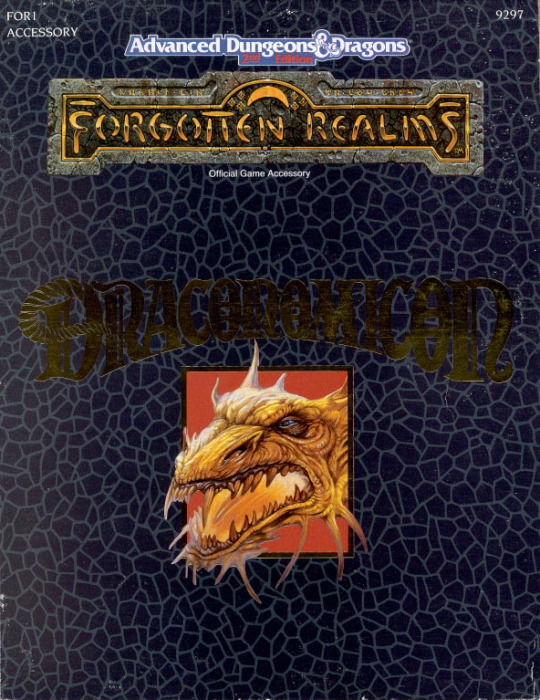
1990's Draconomicon
The draconic pantheon was first expanded with 1990's Draconomicon, though oddly, Bahamat and Tiamat are not among the list of Draconic deities, at least seemingly.
The book instead presents Bahamut and Tiamat instead as seemingly archetypal forms of all dragons (even indeed, the twin Platonic forms of all dragons), even their gods, all of whom (with one exception) are their "pale reflections": " And here the conversation must turn to dragons, for in these species the diffusion theory seems to be the only suitable explanation for their wide-spread existence. Dragons are the only creatures for which there exist archetypal forms. In dragonkind, these forms are Bahamut, the Platinum Dragon, and Tiamat, the Chromatic Dragon. All of the core species of dragonkind the good aligned metallic dragons and the evil-aligned chromatic dragons (ignoring for a moment those fringe species like crystal dragons) seem to be pale reflections of their archetypal forms, displaying some but not all of that archetypes characteristics. For example, a red dragon possesses some but not all of the characteristics attributed to Tiamat, while a gold dragon possesses some but not all of the characteristics attributed to Bahamut. Indulging in mathematical language for a moment, each species of dragon seems to be a subset of properties belonging to one or other of the archetypes. Or, conversely, each archetype seems to possess a superset of the properties possessed by the appropriate class of dragonkind. Some sages truly believe this observation to be representative of the truth of the matter. According to this theory, the very existence of the two archetypal forms Bahamut and Tiamat is responsible for the existence of dragons throughout the multiverse. In metaphorical language, dragons are the shadows that the archetypes cast across the planes. As shadows are, in a sense, subsets of the creatures casting them as they must be, since shadows are two-dimensional so are the shadows of the dragon archetypes subsets of those archetypes characteristics and powers."
Two of the dragon gods, Lendys and Tamara, as Platinum Dragons, seem to be even closer to the archetype of Bahamut, both being platinum dragons themselves, but still lesser than him.
In the same book, there is also mentioned the oldest and highest draconic god, Asgorath the World-Shaper, later identified with Io. Asgorath is stated to to be creator of dragons, and the universe (in the sense of seemingly all existence), at least according to dragons.
But, the myth in the same sourcebook (as found in-universe in the Book of the World, a written down red dragon myth, suggests Asgorath is Tiamat: "It is easy to speculate, based on this myth. The plural inflection of the word breath might be taken as implying multiple heads; the Thorass word for renegade is bahmat. It seems almost too close a correlation can Asgorath be Tiamat and the Renegade be Bahamut?"
This is further alluded in Asgorath's description: "Thus, reds believe that Asgorath is Chaotic Evil as implied in the Book of the World mentioned at the beginning of the chapter while bronzes believe Asgorath is Lawful Good."
Suggesting that like red dragons see/perceive Asgorath as Tiamat, Bronze (and other good dragons) would see the World-Shaper as Bahamut. And that the two "archetypal dragons" are themselves seemingly aspects/parts/avatars of Asgorath. Which is further suggested together with Bahamut's description in Draconomicon: "Sages continue to debate the true nature of Bahamut. Is he the archetype of all good dragonkind, the ideal of which all other dragons are merely shadows? Is he an avatar of a greater deity?"
This is quite obviously an inspiration for Io being split in ancient times into Bahamut and Tiamat in 4th edition/Nerath lore. As well as in "Fizban's Treasury of Dragons", presenting Bahamut and Tiamat as the origin of all dragons, and their forms, it even also using allusions to platonic forms, and shadows of higher reality. As well as Bahamut and Tiamat creating the original universe (that split into the multiverse), like Asgorath was stated to.
Io was first introduced in 1992's Monster Mythology, if very probably taking inspiration from Asgorath (with whom he is directly identified in the book), as well as perhaps Krynn's High God. Io is also stated there to be believed by dragons to be their creator, and of all of existence. As well repeating Platonic and Gnostic ideas from Draconomicon about the world being a shadow of a higher, truer reality: "We Dragon-sages make a distinction between the Two Voids; the First Void, wherein only Io had existence, and the Shadow Void, where Io's willingly shed blood created the potential for existence and creation to come into being. Most non-dragon races only know of the Shadow Void, and they do not know of the earlier time outside time when only the Ninefold Dragon existed."
Monster Mythology though, makes Bahamut and Tiamat somewhat lesser in status, making them Lesser Gods, though only Io (as a Greater God) and Chronepsis (an Intermediate God) are above them, the other two gods (Faluzure and Aesterinian), being on the same level of power. Still though, it is a visible downgrade from their grand role in Draconomicon, and of their counterparts (Paladine and Takhisis) on Krynn. Monster Mythology is also the the first to make Bahamut and Tiamat explicitly siblings and "intended mates".
1998's "Cult of the Dragon" sourcebook, combined the draconic pantheons mentioned described in Draconomicon and Monster Mythology, often identifying/conflating some deities between the two (notably Asgorath and Io, though that was done before). Though this also resulted in a seeming further downgrade in status of Bahamut and Tiamat, them being still Lesser Gods (and Bahamut identified with Xymor, made as possible child of Lendys and Tamara), while including multiple Intermediate Gods (Astilabor, Garyx, Kereska, Lendys, Null as the Guardian of the Lost/Chronepsis, Tamara and Zorquan).
218 notes
·
View notes
Text
REVEALED: Astarion Secret Lair cards, Original Adventure arts, and more for Dungeons & Dragons 50th Anniversary!
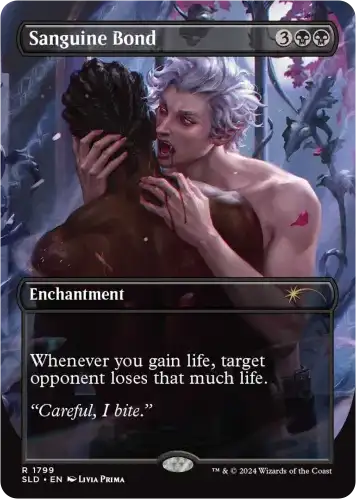
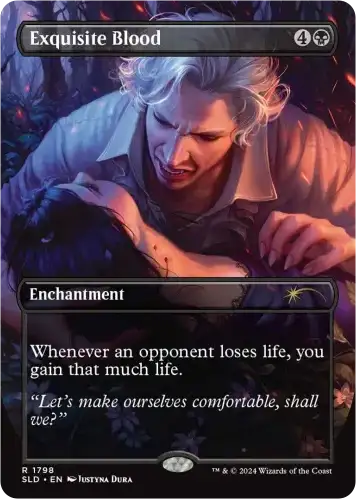
Over the past few days, we've seen some exclusive looks at what's to come in two of the Dungeons & Dragons x Secret Lair Super Drop, particularly for Astarion and An Exhibition of Adventure. There are 5 cards for Astarion's Thirst, and 7 in An Exhibition of Adventure. What's interesting about these cards in particular is that they are designed with original artwork from Dungeons & Dragons' first debut 50 years ago!
Within An Exhibition of Adventure you will find some OG artwork of a Beholder, the Player's Handbook and the Basic Red Dragon! If you've been a long-time fan of Dungeons & Dragons, and you're a Magic Player, perhaps this is definitely a set to pick up.
Inside An Exhibition of Adventure the cards are as follows:
Fell the Mighty Sorcery Destroy all creatures with power greater than target creature's power. {Dungeons & Dragons Supplement I: Greyhawk (1975)} Faithless Looting Sorcery Draw two cards, then discard two cards. Flashback {Advanced Dungeons & Dragons: Player's Handbook (1978)} Goldspan Dragon Creature - Dragon Flying, haste Whenever Goldspan Dragon attacks or becomes the target of a spell, create a Treasure token. Treasures you control have ", Sacrifice this artifact: Add two mana of any one color." {Dungeons & Dragons Set 1: Basic Rules, "Red Box" (1983)}4/4 Reality Shift Instant Exile target creature. Its controller manifests the top card of their library. {Advanced Dungeons & Dragons: Dungeon Master Guide, 2nd Edition (1989)} Monster Manual Artifact Zoological Study Sorcery - Adventure Mill five cards, then return a creature card milled this way to your hand. , : You may put a creature card from your hand onto the battlefield. {Monster Manual, 3rd Edition (2000)} Ponder Sorcery Look at the top three cards of your library, then put them back in any order. You may shuffle. Draw a card. {Dungeon Master's Guide, 4th Edition (2008)} Acererak the Archlich Legendary Creature - Zombie Ward When Acererak the Archlich enters, if you haven't completed Tomb of Annihilation, return Acererak the Archlich to its owner's hand and venture into the dungeon. Whenever Acererak the Archlich attacks, for each opponent, you create a 2/2 black Zombie token unless that player sacrifices a creature. {Dungeon Master's Guide, 5th Edition (2014)} 5/5
In summary, we are eager to see what else this Secret Lair drop has in store. With a good look at Astarion (seen below) and an in-depth view of An Exhibition of Adventure we just can't wait to see what monsters lurk in Death is in the Eye of the Beholder I and II, or Karlach's Rage! To view all the cards in their glory, head to our blog. And be sure to keep checking for new updates regarding the Dungeons & Dragons x Secret Lair 50th Anniversary Drop!
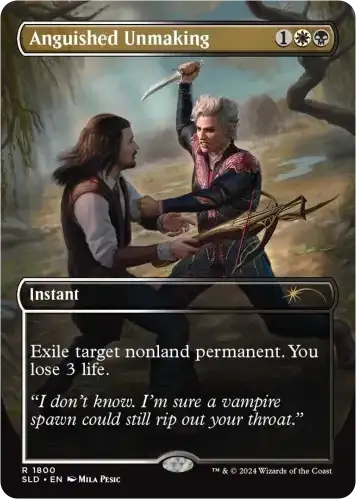
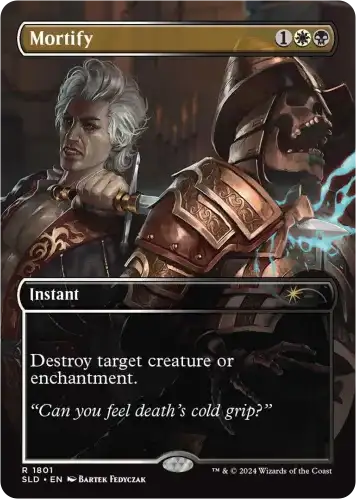


#magic the gathering#secret lair#baldurs gate 3#dungeons and dragons#dungeons & dragons#dnd#d&d#astarion#karlach#shadowheart#lae'zel#bg3#gale of waterdeep#bg3 wyll#halsin#total cards#we love gaming#secret lair drops#reveals
26 notes
·
View notes
Text
I don't know if anyone's gone through the original Dawn War pantheon* and compared the events of the Dawn War to the events of the Calamity, but it's interesting comparing how Tharizdun acts in the Dawn War to how little we know about it as the Chained Oblivion and might be useful as a theory-crafting aid for how the Chained Oblivion fits with Predathos**.
In the Dawn War, Tharizdun was a normal god, driven mad by extradimensional demons who provided him with huge amounts of power and attempted to force him to open a portal in the Astral Plane to release them. He took this power, and instead of releasing them created the Abyss. He and his would-be masters fought to a stalemate over control of the Abyss, until the rest of the pantheon found out and sealed him away, leaving him chained to a remote part of the Abyss[1].
By contrast, the Chained Oblivion is "something other entirely"[2], "less like a god and more like another world"[3]; it's been categorised as not of the Primes or Betrayers[4], and generally Matt has leaned much more into the cosmic horror vibes (sans a connection to the Far Realm) of the Chained Oblivion. It's a creature of "roiling ink and hungry darkness"[5], and was sealed at the bottom of the Abyss by the Dawnfather and the Knowing Mistress, with support from the Allhammer and the Changebringer[2, 3, 6]. The Chained Oblivion also wants to consume all and end the world and is kept at arms length by the Betrayers[5], and as a result of that plus its association with an unknowable hunger some people have now associated it with Predathos or think it and Predathos are of a similar species.
I think the Chained Oblivion is not Predathos in another form, but I do think that it's of a similar species. Looking at the Dawn War, and assuming (with the full acknowledgement that I'll more than likely be wrong) that Matt will stick as closely to the Dawn War as he has in the past, I think the Chained Oblivion is a smaller and weaker being of nothingness that decided to forge its own path instead of following Predathos' lead. My gut instinct is that the Chained Oblivion, seeing Ethedok and Vordo get eaten, took up Ethedok's mantle of darkness[7]*** and avoided working with Predathos and porentially fought the God Eater in order to survive and work its own odd plans of destruction. The Chained Oblivion makes a lot of plans to try and free itself (see the Angel of Irons or Cognouza), so I wouldn't be surprised if its propensity towards planning was present from the very moment it set foot on Exandria. Does this mean the Chained Oblivion will be let loose to fight the God Eater if Predathos is released? I doubt it, considering that it nearly killed the Knowing Mistress. And we know how the gods feel about family.
Footnotes
*The Dawn War pantheon is the slimmed down pantheon used for 4th edition D&D; can be found on page 11 of the 5th edition Dungeon Master's Guide. Used by Matt for the Primes & Betrayers with the addition of Sarenrae from Pathfinder.
**I'm aware of the pitfalls of using existing narratives and non-Exandrian lore to try and predict what's going on in CR at this moment in time; while there's not a 1:1 overlap between other D&D worlds' lore and Exandria, some of the major relationships do stay the same. For example, Pelor, Ioun and Tharizdun are all linked in Exandria and in D&D "canon" (Pelor, Ioun and Tharizdun all looked into the Far Realm and saw mysterious secrets, secrets which drove Tharizdun to want to destroy the universe as per Gates of Madness (2010). Additionally, Tharizdun is deeply associated with the Abyss across both settings). Bear with me.
***Zehir, the Cloaked Serpent is also associated with darkness; however while the Lawbearer and the Platinum Dragon are associated with order there is no explicit god of order which was Vordo's other domain. The Chained Oblivion is explicitly described as a god of darkness in both the Explorer's Guide to Wildemount (page 27) and the Tal'Dorei Campaign Setting Reborn (page 34).
References
1. Demonomicon (2010), pages 7-9. The wording of how the sealing took place is intentionally vague as it's a plot hook for DMs to expand on in their campaigns.
2. Titles and Tattoos, CR Campaign 2, Episode 84, from 14:00.
3. Explorer's Guide to Wildemount (2020), page 27.
4. Matt's Discord post during Nick Marini's AMA (linked here).
5. Tal'Dorei Campaign Setting Reborn, page 36.
6. The Endless Atheneum, CR Campaign 1, Episode 106, from 1:08:16.
7. Axiom Shaken, CR Campaign 3, Episode 43, at 3:02:19.
#cr meta#critical role#cr3#had to wait till the latest episode was out in case there was a big god lore drop#but we're all good. anyway enjoy this maddening (referenced!) thing i decided to do#i know using other d&d settings' lore is not great practice! but idk something about the dawn war scratched a particular itch in my brain#there's something there with predathos and tharizdun and then seeing how matt has paralleled the dawn war (which itself draws on fantasy an#mythological tropes of “wars in heaven” or wars against titans because everything draws on everything)#but i don't know. there's something there with a would-be servant rebelling against its creator and then going onto want total destruction#the demons that provided tharizdun with the power to create the abyss are called obyriths if you're wondering btw#go back to older editions for campaign inspiration there's all kinds of crazy stuff there highly recommend#also before i forget shoutout to encyclopedia exandria without whom i would not have been able to put a lot of this together
21 notes
·
View notes
Text
A guide for new players to DnD, Character Creation.
Welcome to the wonderful world of Dungeons & Dragons! Creating your first character (PC) can seem daunting, but it's a fun and rewarding process. This guide will walk you through the steps for 5th Edition (5e) in 2024, combining essential information with insights into popular choices.
Phase 1: Concept & Inspiration
This is where your hero begins! Think about who they are at their core.
What kind of hero are you?
Start with the basics: Do you want to be a brave knight, a sneaky rogue, a wise wizard, or a nature-loving druid?
Think about their personality: Are they kind and compassionate, gruff and stoic, or mischievous and witty?
Consider their backstory: Where did they come from? What motivates them? What are their goals?
Don't be afraid to be inspired by books, movies, or video games!
The "Rule of Cool": D&D is about having fun. If an idea excites you, go for it! Don't worry about being "optimal."
Phase 2: The Core Mechanics
Now, let's get into the foundational choices that define your character.
Race (Species)
Your race (now often called species in 5e 2024) provides inherent traits, abilities, and cultural background.
Common Choices (and why they're popular):
Human: Versatile and adaptable, now even more so with extra skill and a "Heroic Inspiration" use, fitting almost any concept.
Elf: Graceful, long-lived, and often skilled in magic or archery. Various lineages (Drow, High Elf, Wood Elf) offer unique benefits.
Dwarf: Hardy, skilled in crafting, and resistant to poison. The 2024 version provides strong Darkvision, poison resistance, and bonus HP.
Goliath: Large, powerful humanoids, great for martial classes, now with increased speed and "Giant Ancestry" options.
Aasimar: Celestial-touched humanoids, gaining popularity for their Necrotic and Radiant damage resistance and "Celestial Revelation" damage bonus.
Tiefling: Humanoids with fiendish ancestry, unique appearance, and magical abilities like Darkvision and cantrips.
Dragonborn: Humanoid dragons with improved breath weapons that scale with level, usable in more versatile ways.
Halfling: Small, nimble, and lucky, generally buffed in the 2024 rules for better playability.
Gnome: Noted for mental fortitude, often gaining advantage on Intelligence, Wisdom, and Charisma saving throws.
Orc: Full Orcs in 2024 have super-long Darkvision and an "Adrenaline Rush" ability for extra movement and temporary HP.
Consult the Player's Handbook or basic rules document for a more complete list.
Consider how your race fits your character concept.
Class
Your class determines your skills, abilities, and role in the party.
Common Choices (and their general roles):
Fighter: Masters of combat, proficient with weapons and armor. Consistently the most played class due to versatility and combat prowess.
Rogue: Skilled in stealth, deception, and dealing precise damage. Excellent for out-of-combat utility and burst damage.
Barbarian: Raging warriors, capable of dealing massive damage. A strong frontline combatant with impressive resilience.
Wizard: Masters of arcane magic, capable of casting powerful spells. Offers immense versatility and powerful magical options.
Paladin: Holy warriors, capable of healing, smiting, and protecting allies. A strong hybrid of martial power and divine magic.
Warlock: Unique pact magic users with customizable invocations, offering a distinct spellcasting experience.
Cleric: Divine spellcasters, capable of healing and supporting allies. Vital for party support, with improved heavy armor proficiency in 2024.
Bard: Charismatic performers, capable of inspiring allies and manipulating enemies. Highly versatile in social interactions and support.
Druid: Nature-based spellcasters, capable of transforming into animals. Versatile with healing, control, and damage options.
Monk: Martial artists, capable of dealing unarmed damage and using ki. Significantly improved in 2024 with better damage and grappling.
Sorcerer: Innate spellcasters, with magic flowing through their blood. Known for Metamagic, allowing unique spell manipulations, improved in 2024.
Ranger: Skilled in wilderness survival, capable of tracking and hunting enemies. Wilderness-focused martial class with some spellcasting, with 2024 changes aiming for improved effectiveness.
Consult the Player's Handbook or basic rules document for a more complete list.
Choose a class that aligns with your desired playstyle.
Phase 3: Ability Scores
These six numbers are fundamental to almost everything your character does.
The Six Abilities:
Strength (STR): Physical power, often used for melee attacks and carrying capacity.
Dexterity (DEX): Agility and reflexes, important for ranged attacks, armor class, and initiative.
Constitution (CON): Health and stamina, directly impacts your hit points and resilience.
Intelligence (INT): Mental acuity and knowledge, crucial for spellcasting for some classes and many knowledge skills.
Wisdom (WIS): Perception and intuition, important for insight, survival, and spellcasting for other classes.
Charisma (CHA): Personality and social influence, vital for persuasion, deception, and spellcasting for certain classes.
Methods of Generation:
Standard Array: 15, 14, 13, 12, 10, 8. Assign these numbers to your abilities as desired. This ensures a balanced character.
Point Buy: You have a set number of points to allocate to your abilities, with higher scores costing more. This allows for more customization while preventing extremely weak or powerful characters.
Rolling: Roll 4d6 (four six-sided dice), discard the lowest roll, and add the remaining three. Repeat six times, and assign the results to your abilities. (This method can lead to very strong or very weak characters, so many Dungeon Masters (DMs) prefer other methods).
Consult with your DM to see what method they prefer.
Racial Bonuses: Your race may provide bonuses to certain ability scores. Apply these bonuses after generating your scores.
Phase 4: Skills & Proficiencies
These define what your character is good at.
Proficiencies: Your class and race grant you proficiencies in certain skills, weapons, and armor.
Proficiency means you add your proficiency bonus to ability checks and attack rolls, making you better at those specific tasks.
Skills: Skills are tied to ability scores. For example, Athletics is tied to Strength, and Stealth is tied to Dexterity. Choose skills that align with your character's concept and class.
Phase 5: Background & Equipment
These elements flesh out your character's past and present.
Background: Your background provides additional skills, proficiencies, and equipment, plus crucial roleplaying elements.
Common backgrounds include:
Acolyte: Religious devotee.
Criminal: Lawbreaker.
Entertainer: Performer.
Folk Hero: Local champion.
Noble: Aristocrat.
Sage: Scholar.
Soldier: Veteran warrior.
Choose a background that complements your character's backstory and helps you imagine their life before the adventure.
Equipment: Your class and background provide starting equipment. You can also purchase additional equipment with your starting gold.
Phase 6: Putting It All Together
You're almost ready to play!
Record Everything: Use a character sheet to record your ability scores, skills, proficiencies, equipment, and other details. Many digital tools (like D&D Beyond or Roll20) exist to help with this.
Final Touches:
Give your character a name, unique personality traits, ideals, bonds, and flaws. These are fantastic roleplaying hooks.
Write a short backstory.
Work with your DM to integrate your character into the campaign.
Tips for First-Time Players
Don't be afraid to ask questions: Your DM and other players are there to help. No question is too silly!
Keep it simple: Start with a straightforward character concept. You can explore more complex ideas in future campaigns.
Have fun! D&D is about collaborative storytelling and adventure. Embrace the unexpected.
Use online resources: Websites like D&D Beyond and Roll20 offer helpful tools and information, including digital character sheets and rule lookups.
Read the basic rules: Familiarize yourself with the core mechanics of the game. It will make your first session much smoother.
By following these steps, you'll be well on your way to creating a memorable and enjoyable D&D character. Good luck, and have fun on your adventures!
#DnD#DungeonsAndDragons#DnD5e#CharacterCreation#NewPlayer#TabletopRPG#TTRPG#Fantasy#Roleplaying#DungeonMaster#PlayerCharacter#Homebrew#GeekLife#NerdCulture#ttrpg community#ttrpg tumblr#dungeons and dragons#madlabgames
4 notes
·
View notes
Text
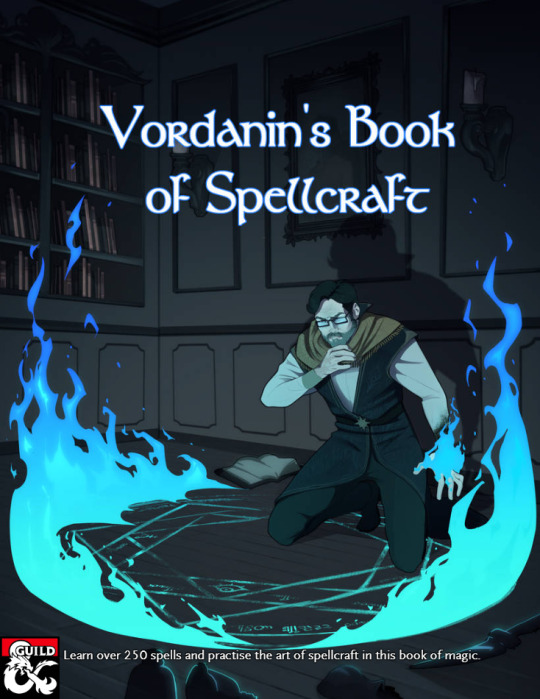
Vordanin's Book of Spellcraft
Unlock the Mysteries of Magic in Your Campaign
Vordanin's Book of Spellcraft, is a must-have tome for any Dungeon Master or player looking to enrich their games with a treasure trove of spells, feats, and spellcrafting knowledge. Offalon Vordanin has delved into arcane archives to bring new and exciting spells to bring you this comprehensive guide that is divided into three enchanting parts, each brimming with arcane secrets and practical enhancements for your magical adventures.
Part 1: Spells
Delve into the heart of magic with over 250 spells that span the ages. Offalon brings together an exquisite collection of spells, both new and cherished classics from earlier editions. Every spell has been meticulously updated for 5th Edition, ensuring seamless integration into your campaign. A useful table summarises each of the spells, telling you the spell's magic school, a description, and what classes can learn the spells!
Part 2: Character Options
Enhance your spellcasting prowess with a variety of new options tailored for spellcasters of all types. This section is dedicated to providing new ways to customize and empower your magical abilities. It also contains new invocations for warlocks and new metamagic options for sorcerers!
Part 3: Spellcraft
Unleash your inner arcanist with a deep dive into the mechanics and mysteries of spell creation. Whether you're a player eager to craft unique spells or a DM looking to design memorable magical experiences, this section provides the comprehensive tools and advice you need.
Vordanin's Book of Spellcraft is not just a spell book; it's a portal to endless magical possibilities. Whether you're a seasoned archmage or a fledgling wizard, this guide will elevate your game, sparking imagination and fostering a deeper understanding of the arcane. Embrace the magic within these pages and transform your 5e experience!
This PDF Contains:
Over 250 spells!
A long table that summarises the spells of this book with easy-to-read information and clickable links to the page of the spell!
Individual spellbooks for each of the 9 spellcasting classes, ordered by spell level. An easy booklet for players to use.
8 new feats for spellcasters.
11 new invocations for warlocks.
9 new metamagic options for sorcerers.
Information and tips for creating new spells as a DM or player.
Comprehensive rules for characters who want to make spells, with many different modifiers based on numerous factors.
Wonderful witticisms from Offalon Vordanin and his...eccentric apprentice.
And much more!
6 notes
·
View notes
Text
9 People You Would Like To Know Better
or in my case, i only have five mutuals so i’m tagging everyone bc you all seem really cool and i would love to get to know you more!
Tagged by @likemonstersinlove !! <3
1. Three Ships: in no particular order - Ineffable Husbands from Good Omens, Liam Wilhelmina/Primsy Coldbottle from D20 Crown of Candy, and the 13th Doctor/River Song (I know they’ve never met in canon but listen, shhh) from Doctor Who
2. First Ever Ship: Percabeth from Percy Jackson
3. Last Song: If You’re the Coffee by The Arcadian Wild!
4. Last Film: Rocky Horror Picture Show! I rewatched it to show to a friend who had never seen it. Truly iconic. I barely understand any of the plot in that movie but I honestly think it’s better that way.
5. Currently Reading: Right now I’m not reading anything but I just finished Against The Currant by Olivia Matthews. It’s a cute little mystery set in a family owned Grenadian bakery in Brooklyn. (Yes, the title is a currant roll pun. There’s a recipe in the back!) It’s really good, I highly recommend. And I’m about to start reading the Dungeon Master’s Guide for 5th edition DnD later today. I’m very excited to see where that takes me!
6. Currently Watching: Dimension 20’s Burrow’s End on Dropout tv. Dropout content has consumed my brain almost entirely since I started watching D20 in February and this is no exception. Also Big Brother. I’m not a big reality shows person but I have been watching BB since 2009 at the ripe age of way too young and now I cannot stop.
7. Currently Consuming: A banana oat breakfast bar thing (?) that I found on pinterest and some water.
8. Currently Craving: I’m going to make pumpkin snickerdoodles either tonight or tomorrow, so definitely those rn.
Tagging: @ace-geographer @auteurdefeu @yourstrullyme @terriblethanksforasking !!!!
17 notes
·
View notes
Text
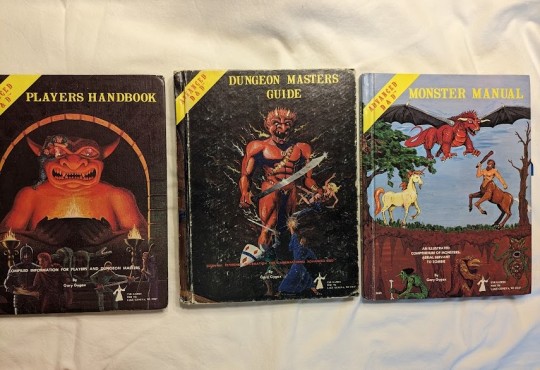
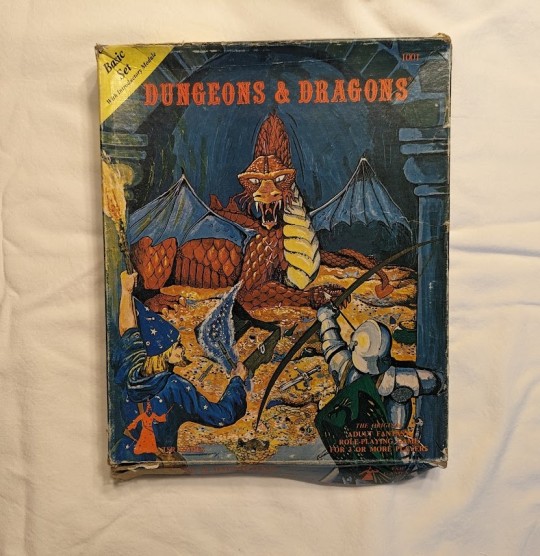
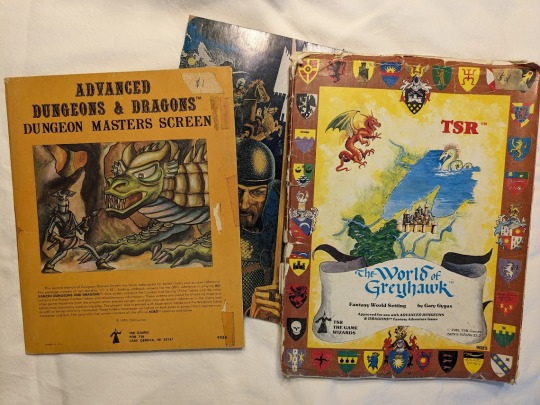
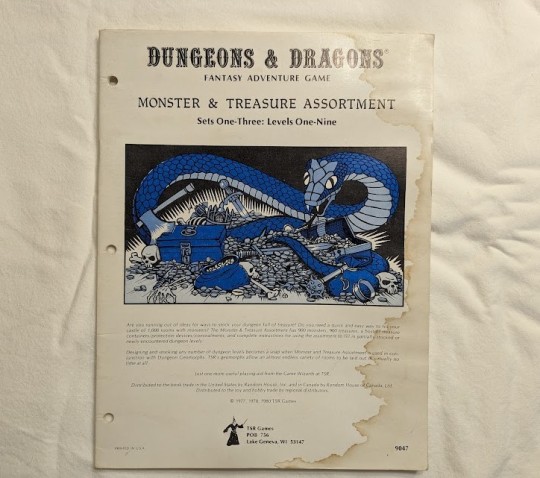
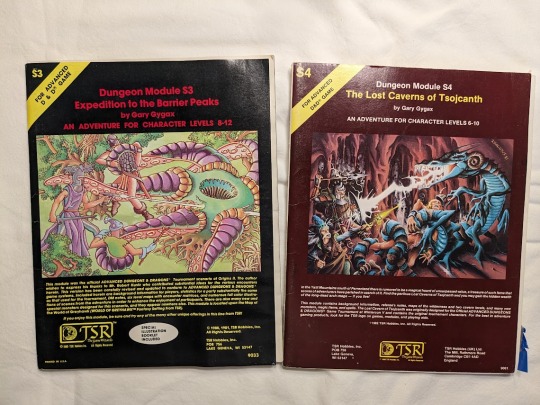
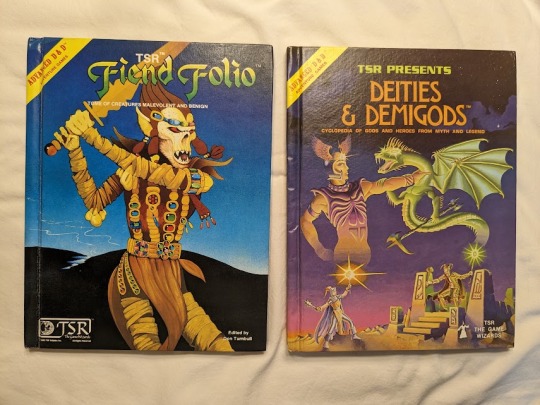

Found several years of my youth in a box of stuff I'd stored away. Many years ago, my friends and I were HUGE fans of Dungeons and Dragons (yes, these are all First Edition books and modules). We spent many, many, MANY weekends creating our little worlds and, as the Dungeon Master, I filled countless notebooks with all of the details of the world and the people in it. So many great memories from those days.
It's funny, because my daughter is playing D&D now, with friends, but they play on-line, via Zoom, using 5th edition rules. She has none of the handbooks, or notebooks, or guides, or modules, and was fascinated at the excruciating detail there is in all of these books and modules. When I explain to her how we used to gather together in one of the lounges in the dorms back in college, and set up our graph paper, and notebooks, and rolled actual dice on tables, it boggles her mind.
5 notes
·
View notes
Text
Title: Mastering Dissonant Whispers in D&D 5E: The Ultimate Guide for Gamers
If you’re exploring spell options in Dungeons & Dragons 5th Edition (D&D 5E) and want a spell that combines horror, damage, and strategic disruption, Dissonant Whispers is a top choice. This 1st-level enchantment spell isn’t just powerful for its psychic damage; it also forces enemies into fear-driven flight, opening up valuable battlefield control. Perfect for Bards or other magic users looking…
0 notes
Text
Grappling in D&D 5e: Tips and Techniques for Success
Grappling in Dungeons & Dragons 5th Edition (D&D 5e) is a powerful yet often overlooked combat technique that can provide significant tactical advantages. Whether you are a seasoned Dungeon Master (DM) or a player looking to refine your character’s abilities, mastering grappling can turn the tide of battle. In this guide, we will explore the mechanics of grappling, the best techniques, and how to optimize your character for success.
Understanding the Grapple Mechanic in D&D 5e
The rules for grappling in D&D 5e are straightforward, found in the Player’s Handbook (PHB, p. 195). To initiate a grapple:

You must use the Attack action to attempt a grapple.
You make a Strength (Athletics) check against your target’s Strength (Athletics) or Dexterity (Acrobatics) check.
If you succeed, the target’s speed becomes 0, and they cannot move unless they break free.
The grapple ends if you become incapacitated or if the target successfully escapes using an action.
Grappling is particularly effective when combined with abilities that restrict movement, making it easier to control enemy positioning on the battlefield.
Best Classes and Builds for Grappling
Certain classes and builds excel at grappling due to their inherent Strength-based abilities and combat strategies:
Barbarian – With Rage providing advantage on Strength checks, Barbarians make excellent grapplers who can maintain control in combat.
Fighter – Battle Masters can use maneuvers like Trip Attack to enhance grappling effectiveness.
Monk – Combining grappling with Stunning Strike makes Monks extremely dangerous in close combat.
Rogue (Athlete Build) – While not a typical grappler, a Strength-based Rogue using Expertise in Athletics can be surprisingly effective.
Essential Feats for Grappling Success
Certain feats greatly enhance a grappler’s capabilities:
Grappler Feat – Provides advantage on attack rolls against grappled creatures and allows the option to pin an opponent.
Tavern Brawler – Grants proficiency in unarmed strikes and allows you to grapple as a bonus action after hitting with an unarmed strike.
Athlete – While not directly related to grappling, it improves mobility and enhances Strength-based movement options.
Advanced Grappling Techniques
To maximize the effectiveness of grappling in combat, consider these strategies:
Use Environmental Advantages – Grappling near hazards like cliffs, lava, or deep water can add extra risk for your enemies.
Combine Grappling with Spells – Spells like Hold Person or Enlarge/Reduce can give you a significant edge in grappling encounters.
Multi-Classing for Grappling – A Barbarian/Fighter hybrid can combine Rage and the Battle Master maneuvers for devastating grappling prowess.
Shove + Grapple Combo – Using the Shove action to knock an opponent prone and then grappling them makes it harder for them to escape.
Grapple and Drag – Since grappled creatures have a speed of 0, you can drag them into dangerous terrain or isolate them from allies.
Countering Grappling in D&D 5e
If you find yourself frequently on the receiving end of grapples, here are ways to break free:
Use Acrobatics – If your Dexterity is higher than Strength, opt for an Acrobatics check to escape.
Teleportation Spells – Spells like Misty Step or Dimension Door can help you break free instantly.
Magic Items – Items like the Ring of Free Action prevent grapples from restricting movement.
Allies to the Rescue – A teammate can use the Help action or knock your grappler prone to make escaping easier.
Conclusion
Grappling in D&D 5e is an underutilized but incredibly effective tactic that can control the battlefield and neutralize threats. By choosing the right class, feats, and strategies, you can turn your character into a formidable grappler. Whether you’re restraining a powerful foe or dragging an enemy into a trap, mastering this combat technique can add a new layer of depth to your game.
1 note
·
View note
Text
My Content
Hello Everyone, before I start making the content that I have planned I should make a post going over what I have planned for this blog. As the blog title might suggest, the plans are to make builds for different Table Top Roleplaying Games. With the main games that I am going to be making builds for are
Dungeons and Dragons 3.5 edition
Dungeons and Dragons 5th edition (2024)
Pathfinder 2nd edition
Cyberpunk Red
Avatar Legends
Lancer RPG
I am also going to be doing builds for other tabletop roleplaying games alongside the ones listed above but the ones listed above are the main ones that I will be focused on. Additionally, when making the builds I will note what system the build is for since though people could probably know what the system the build is for it would just help to know from the beginning what game it is for, like noting that a build is specifically for DnD 5e instead of DnD 3.5e for example. as for the materials (materials being used in broad meaning here) I will be using going from will use first to will be used last are as followed
Official Material: Official Material includes things like the Dungeons and Dragons 5e 2024 Players Handbook, the Cyberpunk Red Black Chrome book, and the Avatar: Legends Core Rulebook. This just means that the materials that are in these books have been tested enough to where the people behind the material will be able to release said material in the state that they are in.
Partnered Content: so partnered content are materials like Explorer's Guide to Wildmount, Dungeons of Drakkenheim, and the Humblewood Campaign setting which all three examples are partnered content for DnD 5e. But in basic terms, partnered content is fully published content made by a third party to fit into the pre-existing world(s) of whatever system the content was made for.
Unearthed Arcana: though the term Unearthed Arcana is often used in the Dungeons and Dragons community, it just means the content that is released is still going through the public playtesting phases before it is updated and released into any form of official books or content update.
Homebrew: Homebrew, for those who are not familiar with the terminology, is new custom game content that can't be found in any official content (such as custom spells for Dungeons and Dragons or a new Frame for the Lancer RPG)Butut to summarize, outside of being made for a specific game system the piece of homebrew content has no connection to the original company behind the system.
additionally, none of my builds will ever be optimized. I say this because though yes in theory, the making of builds is supposed to be somewhat optimized I am simply making the builds for fun, and plus, I wouldn't want to make a build that I don't think would be fun in some way shape, or fashion. but hopefully, if you decide to play one of the builds I make I hope that you can also have as much fun with them as I have making them
EDIT: So as I am making my first build (for the game of Dungeons and Dragons 5e anyway) I should make note that 1. I am going to be using stuff from before the 2024 players handbook for DnD in the DnD 5e builds. Number 2. for the species seen in the books before I believe Tasha's Caldron of Everything but for sure before the 2024 player's handbook I am going to be using the "Origin Ability Score Increases" (aka a +2 and a +1 to any of the stats scene in the game) and the "Origin Languages" (aka besides common getting to pick any two languages I want) so that I can make sure that I can still use the species seen in those books in my builds. and 3. I am going to be giving every build a level-one feat, which means that (assuming that the person running your games allows for a first-level feat outside those given by the build's species (like via Variant Human) and Background(like the 2024 Player's Handbook version of the Soldier background) a build could give the player up to 3 feats at level one, but ALWAYS make sure to ask your Game Master if you could take a level one feat before you do so
1 note
·
View note
Video
youtube
Why Dungeons & Dragons is the Ultimate Game Night Experience!
You know, there’s something truly magical about gathering around a table, surrounded by friends, snacks, and a whole lot of dice. Dungeons & Dragons, or D&D as we lovingly call it, is more than just a game; it’s an experience, a journey into a world of imagination where anything is possible. Picture this: you’re not just sitting there; you’re stepping into the shoes of a brave warrior, a cunning rogue, or perhaps a wise wizard. You’re not just rolling dice; you’re determining the fate of your character and the story unfolding around you. So, what exactly is D&D? At its core, it’s a tabletop role-playing game that blends storytelling, strategy, and creativity. One person, known as the Dungeon Master, takes on the role of the storyteller and referee, guiding the narrative and controlling the world. The rest of us? We become heroes, making choices that shape our adventures. It’s like collaborative storytelling on steroids, where every decision matters, and every roll of the dice can lead to triumph or disaster. Now, let’s talk about some key elements that make D&D so engaging. First up: role-playing. This isn’t just about rolling dice; it’s about embodying your character. You’re not just playing a game; you’re becoming someone else. You’ll find yourself acting out your character’s personality, quirks, and goals. Maybe your character is a noble paladin, sworn to uphold justice, or perhaps a mischievous bard who can charm their way out of any situation. The beauty of role-playing is that it allows you to explore different facets of yourself while embracing creativity. Then there’s the dice. Ah, the glorious polyhedral dice! You’ve got the d20 for those critical moments, the d6 for damage, and a whole array of shapes that would make any math teacher proud. Rolling dice isn’t just about luck; it’s about strategy. You’ve got to think ahead, plan your moves, and sometimes just pray to the dice gods for a natural twenty. Each roll can change the course of the story, leading to epic victories or hilarious failures. But here’s the kicker: teamwork. D&D is all about collaboration. You’re not just a lone hero; you’re part of a party, a group of adventurers working together to overcome challenges. Whether it’s battling a fearsome dragon, solving intricate puzzles, or navigating social interactions, you’ll find that your success relies on your ability to work with your teammates. It’s a beautiful dance of strategy and camaraderie, where each player brings something unique to the table. If you’re thinking about starting your own game, don’t worry; it’s easier than it sounds. You can dive right in with the Dungeons & Dragons 5th Edition Player’s Handbook. This book is your guide to character creation, rules, and everything you need to know to get started. Create a character that resonates with you, choose their race and class, and watch as they come to life. Gather a group of friends—ideally three to six players—and decide on an adventure. You can choose pre-written modules, like The Lost Mine of Phandelver, or craft your own epic tale.
0 notes
Text
Certainly, D&D's present culture of play doesn't originate from any particular feature of its rules, but there are a couple of areas where the dysfunctions D&D's culture of play – and specifically, its notion that understanding and carrying out the rules are the sole responsibility of the GM – get into a vicious feedback loop with its published rules.
The first is that much of D&D's putative universality is a reflection of the fact that dumping all the work of understanding and carrying out the rules on the GM renders the labour required to hack it to accommodate various premises invisible to the players.
A GM will often say "hey, I want to run a game about X, and I think system Y would be perfect for it", only to be met with insistence that the GM should "just" hack D&D to run it instead. This is almost always vastly more work from the GM's perspective than using an off-the-shelf system, but if you're coming at it from the position that the rules are solely the responsibility of the GM, asking your GM to do a very large amount of work in order to spare you, the player, a very small amount of work can start to sound reasonable.
(Heck, in my experience, some players genuinely don't realise hacking D&D for very unusual premises takes any work at all, because that side of things is completely outside their experience – the GM's labour has been rendered so invisible to them that they think it just works!)
The second is that the text of the 5th Edition in particular has a nasty habit of going on extended game-mechanical tangents which just sort of peter out with an encouragement for the GM to figure it out on their own, and offer no helpful conclusions.
There are several reasons for this, ranging from 5E's corporate mandate to be an "evergreen" D&D which appeals to fans of all previous editions equally meaning that it can never take a firm stance on what kind of game it wants to be, to lead developer Mike Mearls' bizarre belief that GMs need to be granted explicit permission by the text to make their own rulings, and that deliberately vague or incomplete rules are how the text grants this permission.
Whatever the root of it is, the upshot is that there's a lot of fairly foundational shit in 5E where the Player's Handbook says "ask your GM for the details of how this works", and the Dungeon Master's Guide, after much digression, says "I don't know, figure it out yourself". There's a chicken-or-egg argument to be had about whether this causes some players to be reluctant to engage with the rules, or merely puts roadblocks in the path of players who'd prefer to get their hands dirty, but there's definitely a self-reinforcing cycle in play.
Every time I talk about how Dungeons & Dragons as a culture of play (i.e., as distinct from any particular published iteration of the game called Dungeons & Dragons) tends to put the GM in the position of doing all the actual work of making the game happen, and how the idea that only the GM has any responsibility for understanding and carrying out the rules is a big part of this, I always get jokers going "well ACTUALLY that's not true because I don't use the rules as written when I run games – I just make up the mechanics as I go."
Buddy, the notion that inventing a whole new game on the fly to suit the exact preferences of the group is an entry-level skill that ought to be expected – even demanded! – of any GM, regardless of their experience level, is itself an expression of the idea that responsibility for understanding and carrying out the rules rests solely with the GM.
Like, there's a reason D&D as a culture of play thinks it's normal for GMs to be miserably overworked and treats GM burnout as a funny joke; if it didn't, we'd have to acknowledge that something is askew.
6K notes
·
View notes